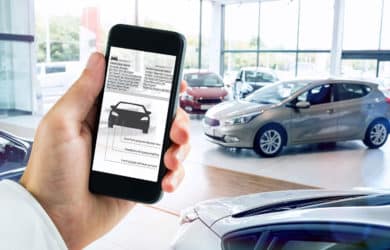Drivers for new mobility concepts
Socioeconomic and technological megatrends such as urbanization, digitization, conscious consumption, or concern for the environment are causing the market for shared mobility services to grow steadily.
Underway for decades, urbanization is leading to the densification of residential areas. The resulting shortage of parking spaces makes owning a car in metropolitan areas unattractive. Car-sharing customers save themselves the hassle by parking the car after the trip at the rental station, in public parking or in a specified neighborhood on the street.
Millennials’ declining incomes compared to previous generations are changing consumer culture. For younger consumers, access to a resource is more important than ownership of it. In addition to economic constraints, a high affinity for the mobile Internet and the increasing threat of environmental risks such as climate change make these consumers receptive to alternative mobility offerings, especially when these are realized with electrically powered vehicles.
Car sharing is in first place. In January 2020, the German BCS association put the number of vehicles in the German car-sharing market at 25,400, which is a good quarter more than in the previous year. The total number of registered customers is 2.3 million.
In addition to private car sharing, which is established in many places, there are premium usage models offered by car manufacturers and corporate car sharing, which is organized partly by external specialists and partly within the company, as an alternative to exclusive company cars. Fleet sharing is a further development of this model. Here, OEMs offer company cars for use by their staff or external interested parties. The use of e-cars in car sharing currently depends above all on the expansion of the charging infrastructure.
In addition, technical innovations such as autonomous driving, automotive IT services, and the trend toward multimodal travel offer starting points for the development of shared mobility models. With a wide range of offers and additional services, it is possible to arrange the fastest, most convenient, cheapest, or most interesting solution for tourists, depending on their mobility needs.
The increasing connectivity among and between providers, users and intelligent accompanying systems opens up further potential for developing or expanding shared mobility services. The possibilities range from individualizable billing systems or GPS-based fleet management to networking the car with the outside world.



